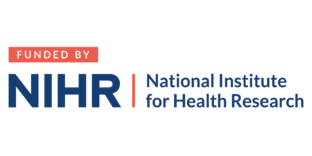Managing patient expectations
It is recognised good practice to give people with life-limiting illnesses opportunities to participate in decision-making and advance care planning. In a study focusing on recordings of experienced palliative care doctors’ consultations with patients and their close companions, we examined decision-making – and in particular how the doctors address potential or actual problems in patients’ plans, decisions and expectations for the future. These problems included things like there being no hospice beds available, or a relative being unable to cope with a person’s care needs at the end of life. In practice, addressing these kind of problems is often termed ‘managing expectations’.
Methods
We began by looking for instances of decision-making in the interactions in our data set of 37 video and audio recorded consultations. We then focused in on episodes where the doctors raised potential and actual problems with patients’ expectations, plans or decisions. We analysed these to build insights into how experienced practitioners navigate the tensions between on the one hand endorsing and supporting patients’ expectations, plans and decisions, and on the other addressing how realistic these are.
Findings
One particular strategy that worked well to address the tensions inherent in managing expectations involved the doctor addressing a hypothetical scenario. We called what happens the ‘Hypothetical Scenario Sequence’. It entails the doctor introducing or drawing on a hypothetical scenario in which – at some point in the future – the patient’s current expectation or plan for the future turns out to be problematic and then the doctor discusses with the patient some plan to deal with that scenario. In general, the doctor worked hard to enable the patient themselves to be the one to actually come up with the plan.
We found 11 instances of this strategy within 9 of our 37 recordings. All five doctors we recorded were found to use this strategy. The potential or actual problems raised related to: place of care (5/11); no hospice bed being available (3/11); treatment options (2/11); and when to implement plans for the last days of life (1/11).
By closely examining the episodes, we were able to unpick some fine details of how the hypothetical scenario sequence works. Here are some key details of this particular way of managing expectations within conversations:
- Give some reason for questioning the patient’s plan or expectation – they do so by, for instance, referring to something another professional has raised, or they build on something the patient has themselves already raised or has experienced as a problem before
- When describing the future scenario, do it in ways that avoid being overly threatening or that could be dismissed as overly pessimistic. For instance, explain this is a general or common problem, emphasise that it might happen but is not certain, depict it as some distance in the future not urgent and immediate
- Deal with the way that raising the (potential) problem with the patient’s plan / expectation can be heard as overly critical. For instance, frame what your are raising as a ‘by the way’ matter, and/or include encouragement and support regarding their existing plan or expectation
Done in this way, raising a hypothetical scenario wherein there is some problem with the patient’s plan or expectation, and then working together to come up with a solution has several advantages. It preserves the patient’s autonomy by giving them the information they need to make ‘good’ decisions. By building on the patient’s own talk and/or experiences it makes the conversation one that very clearly includes the patient’s perspective. And it treats the patient as primary in decision making – or in adjusting decisions and plans – by encouraging the patient to come up with a plan for the hypothetical scenario (in contrast with, for instance, the doctor suggesting an alternative and then seeking the patient’s agreement to it). Uncertainty is inevitable for people with life limiting conditions, and by using hypothetical scenario sequences doctors can prepare patients for contingencies and better equipping them for decision-making in the future.
Conclusion
In practice, the hypothetical scenario sequence can help professionals manage the risks and tensions associated with raising problems with patients’ preferences, plans and decisions.
Information
For more information go to our website www.realtalktraining.co.uk or follow us on twitter @RealTalk_EOLC
Acknowledgements to:
Loughborough University, University of Nottingham, LOROS Hospice Leicester, The Health Foundation and the NIHR. The views expressed in this publication are those of the authors and not necessarily those of the NHS, the National Institute for Health Research, Health Education England or the Department of Health and Social Care.




